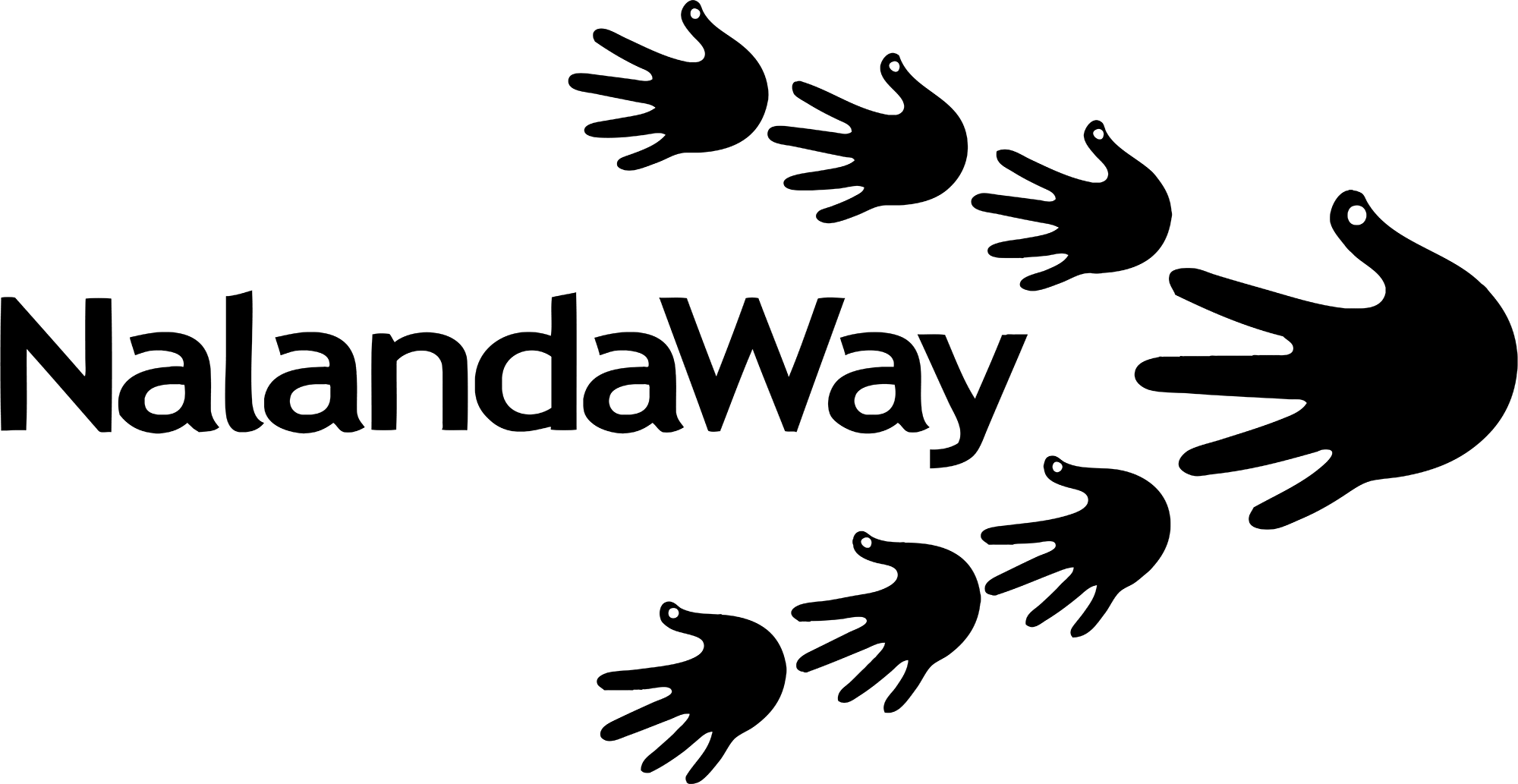
At NalandaWay, the belief in the transformative power of arts for change, development, and assessment has been a core focus, carefully honed over the years. Drawing inspiration from the thought-provoking blog post “Art as a Method of Enquiry” by Arushi Sharma, the inspiring narrative exploring the transformative potential of art by Vidhta T, and my own contribution to the blog “Evaluating Arts?” this article delves into a specific facet of our innovative journey: the valuable insights gained from utilizing Creative Elicitation as a method of data collection.
A Canvas Beyond Words: The Intricacies of Creative Elicitation
Creative Elicitation, a method intricately woven with visual and creative elements, acts as a powerful catalyst in the realm of data collection. Rooted in the idea that images possess the capacity to access unspoken layers of human experiences, this technique transcends the boundaries of traditional interviews. It operates in a realm where expressions flow freely, unburdened by the constraints of right or wrong.
Navigating the Landscape of Emotions
Often, when words fall short when trying to articulate feelings, in those moments, art becomes a powerful tool, allowing the individual to communicate and understand emotions that are hard to put into sentences. Drawings and creative expression, help bridge the gap between feelings and expression.
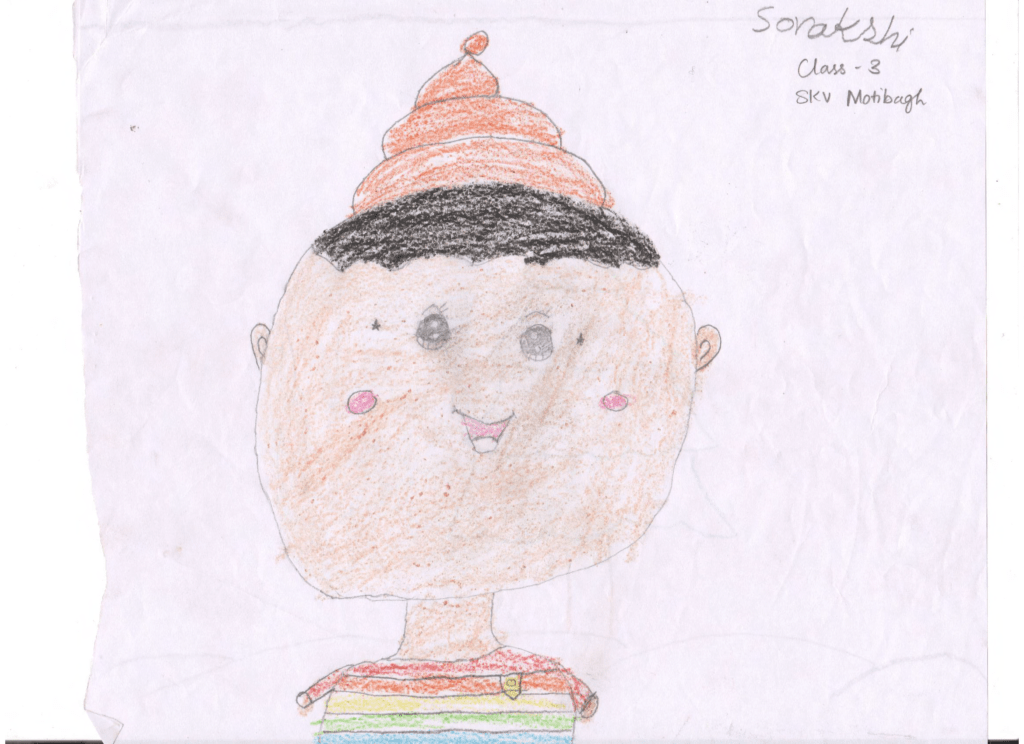
| “Sir once showed us a video of Shahrukh Khan from a film and asked us to look at his face, draw it, and feel it. I liked Shahrukh Khan in this activity. His face was absolutely sad-like. There was happiness inside, and outside, on his face it was sad. A student of class 3, from Delhi Arts Curriculum pilot project |
The Symbolism of Circles and Abstract Expressions
Reflecting on the process, rather than just the final output, emerges as a significant aspect of Creative Elicitation. Within the canvas of art sessions, the circle emerges as a recurring motif, symbolizing unity and inclusivity. It embodies the essence of collaboration, where every participant, be it a student or a teacher, finds a place of equal importance. Furthermore, the use of abstract symbols becomes a language of its own, empowering participants to articulate experiences that defy the constraints of language.


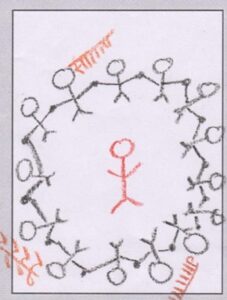
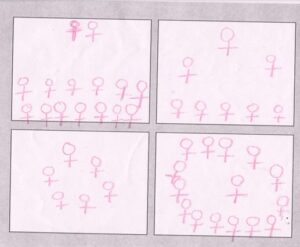
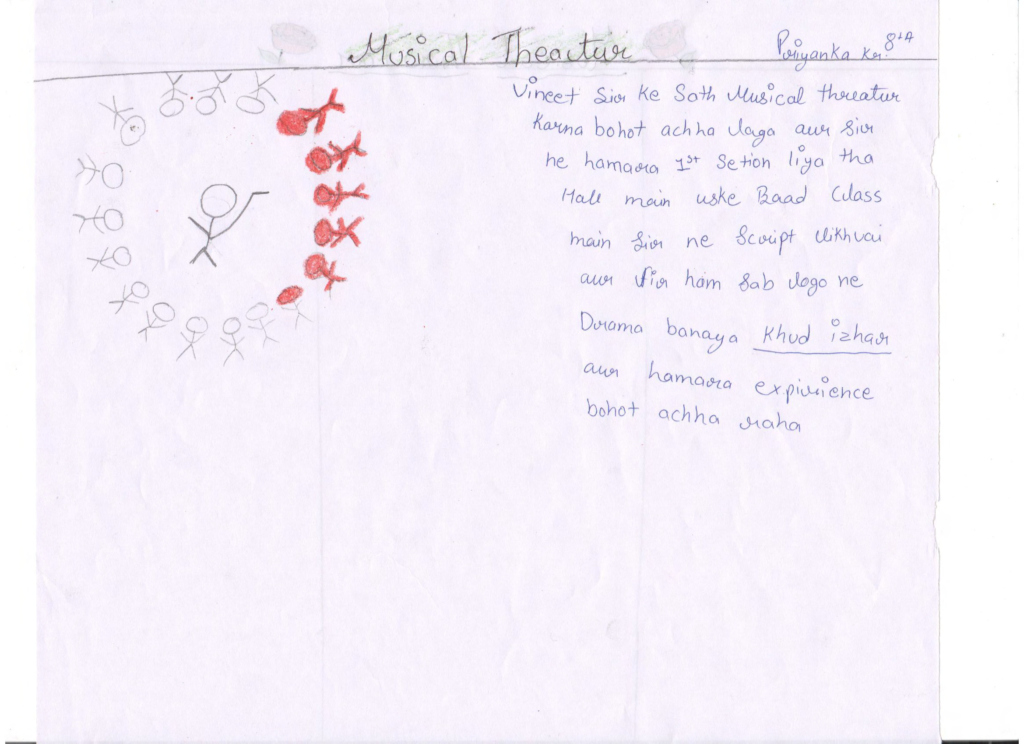
The circle emerged as a recurring and powerful representation of the art sessions in the Delhi Arts Curriculum Pilot. Reflections from participants suggested the circle as depicting the coming together of the class, in a manner that each student and teacher is included and has an equal chance to participate.
Bridging Emotions: The Language of Abstract Symbols in Art
In the realm of artistic expression, participants often turn to abstract symbols as a unique language to convey intricate experiences. Unlike words, art offers a boundless canvas where complex emotions find form. Art becomes a vocabulary of emotions, enabling the articulation of experiences that defy verbal expression. These symbols act as bridges between profound feelings and the limitation of words, creating a safe space for free expression. Given below is an example of how a student depicts her personal journey of growth through the metaphor of a blossoming flower.
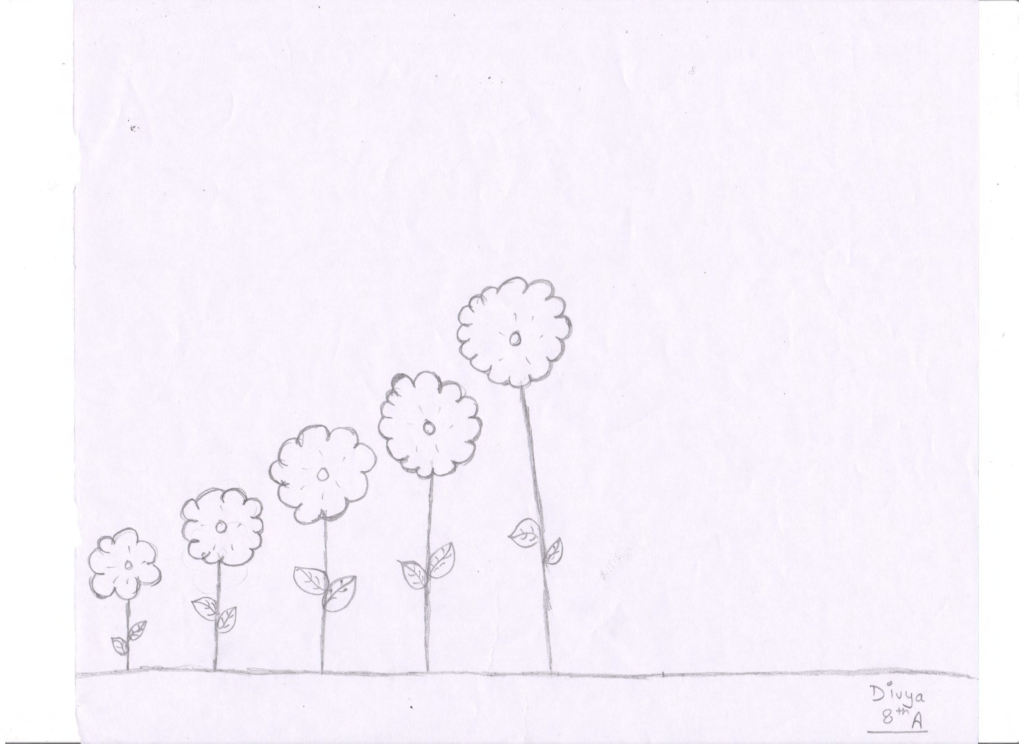
| “Sir has taught us about body shaming. We did not know how our words affected the other person. We never thought about it. I drew flowers, to represent how I grew as a person over the last few weeks. I learnt so much not only about acting, and performance but also about others’ feelings. Student of class 8, Musical Theatre Program |
Creative Elicitation emerges as a vibrant thread, weaving together the diverse narratives of children’s experiences. It stands testament to the profound impact that arts-based evaluations can have, not merely as assessment tools but as a medium of reflection. Through the canvas of Creative Elicitation, the unspoken stories of children find a language, making the extraordinary out of the ordinary.
